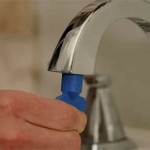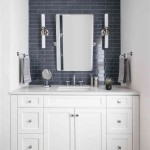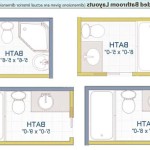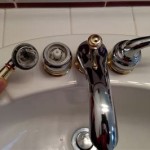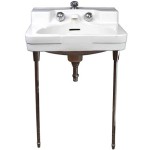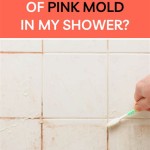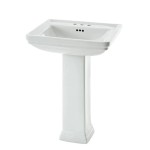How To Get Rid Of Black Mold In Bathroom Walls
Black mold, scientifically known as *Stachybotrys chartarum*, is a type of fungus that thrives in damp, humid environments. Bathrooms, with their frequent exposure to water and steam, provide an ideal breeding ground for this unwelcome guest. Identifying and addressing black mold growth on bathroom walls is crucial for maintaining a healthy living environment and preventing potential health problems. This article provides a comprehensive guide on how to effectively eliminate black mold from bathroom walls, covering identification, preparation, cleaning, and prevention strategies.
Before embarking on the mold removal process, it's essential to accurately identify the problem. Black mold typically appears as dark green or black splotches, often accompanied by a musty or earthy odor. It might have a slimy or fuzzy texture. While other types of mold can also appear blackish, *Stachybotrys chartarum* is particularly concerning due to its potential to produce mycotoxins. These toxins can be inhaled or absorbed through the skin, potentially leading to respiratory issues, allergic reactions, and other health problems. If there is uncertainty about the type of mold present, consider professional testing.
The severity of mold growth dictates the appropriate course of action. Small patches of mold (less than 10 square feet) can often be handled by homeowners with the proper safety precautions and cleaning methods. However, larger areas of mold growth, particularly those exceeding 10 square feet, warrant professional mold remediation. Professionals have the necessary equipment, training, and expertise to safely and effectively remove extensive mold infestations, preventing further spread and minimizing health risks.
Safety First: Preparation Before Mold Removal
Prioritizing safety is paramount before commencing any mold removal project. Mold spores can become airborne during the cleaning process, potentially exacerbating respiratory problems and spreading the contamination. Adequate personal protective equipment (PPE) is essential to minimize exposure. The following safety measures should be strictly adhered to:
Protective Gear: Don disposable gloves made of nitrile or rubber to prevent direct contact with the mold and cleaning solutions. Wear a certified N-95 or P-100 respirator mask to filter out mold spores and prevent inhalation. Eye protection, such as goggles or safety glasses, is crucial to shield the eyes from splashes and airborne particles. Consider wearing disposable coveralls to protect clothing and prevent contamination of other areas of the house. Old clothing that can be discarded after use is also a suitable option.
Ventilation: Ensuring proper ventilation is crucial to prevent the accumulation of mold spores and cleaning solution fumes. Open windows and doors to allow for fresh air circulation. Use a fan to direct air outwards, away from living spaces. Avoid using a central air conditioning system during the cleaning process, as it can circulate mold spores throughout the entire house. If possible, seal off the bathroom from the rest of the house with plastic sheeting and tape to contain the contamination.
Preparation: Gather the necessary cleaning supplies and equipment before starting. This includes a stiff-bristled brush, sponges, spray bottles, cleaning solutions, and disposable cloths or paper towels. Having everything readily available will streamline the cleaning process and minimize the risk of spreading mold spores.
Effective Cleaning Methods for Bathroom Mold
Several cleaning solutions can effectively eliminate black mold from bathroom walls. The choice of solution depends on the severity of the mold growth and the type of surface being cleaned. It's important to test any cleaning solution on a small, inconspicuous area first to ensure it doesn't damage the surface.
Bleach Solution: A solution of one part bleach to ten parts water is a common and effective mold killer. Bleach is a strong disinfectant that can kill mold spores on non-porous surfaces. However, it's crucial to remember that bleach does not effectively penetrate porous materials like drywall or wood. It only removes surface mold, leaving the roots intact. Always dilute bleach properly and avoid mixing it with ammonia, as this can create toxic fumes. Apply the bleach solution to the affected area using a spray bottle or sponge. Allow it to sit for 10-15 minutes, then scrub the area with a stiff-bristled brush. Rinse thoroughly with water and dry the surface completely.
Vinegar: White vinegar is a natural and effective mold killer. It's less harsh than bleach and doesn't release harmful fumes. Vinegar is acidic, which helps to break down mold and inhibit its growth. Pour undiluted white vinegar into a spray bottle and apply it to the affected area. Let it sit for at least one hour, then scrub the area with a brush or sponge. Rinse with water and dry thoroughly.
Baking Soda: Baking soda is another natural and safe option for mold removal. It's a mild abrasive that can help to scrub away mold without damaging surfaces. Baking soda also absorbs moisture and helps to deodorize. Mix baking soda with water to create a paste. Apply the paste to the affected area and let it dry. Then, scrub the area with a brush or sponge and rinse with water. Alternatively, sprinkle dry baking soda on the affected area and let it sit for a few hours before vacuuming it up.
Hydrogen Peroxide: Hydrogen peroxide is a non-toxic and effective mold killer. It's a good option for porous surfaces like drywall, as it can penetrate deeper than bleach. Pour 3% hydrogen peroxide into a spray bottle and apply it to the affected area. Let it sit for 10-15 minutes, then scrub the area with a brush or sponge. Rinse with water and dry thoroughly.
Borax: Borax is a natural mineral that effectively kills mold and prevents its regrowth. It's a good option for cleaning mold on porous surfaces. Mix one cup of borax with one gallon of water. Apply the solution to the affected area using a spray bottle or sponge. Do not rinse. Allow the solution to air dry, as this will help to prevent mold from returning.
Tea Tree Oil: Tea tree oil is a natural antifungal and antibacterial agent that can effectively kill mold. It's a more expensive option, but a little goes a long way. Mix one teaspoon of tea tree oil with one cup of water. Apply the solution to the affected area using a spray bottle. Do not rinse. Allow the solution to air dry.
After applying the chosen cleaning solution, thoroughly scrub the affected area with a stiff-bristled brush to remove mold and surface stains. Pay close attention to grout lines and corners, where mold tends to accumulate. Rinse the area thoroughly with clean water to remove any residue from the cleaning solution. Use a clean, dry cloth or paper towel to dry the surface completely. Moisture is a breeding ground for mold, so ensuring the area is completely dry is crucial to prevent regrowth.
For porous surfaces like drywall, consider using a HEPA vacuum to remove any remaining mold spores and debris. HEPA filters are designed to trap microscopic particles, preventing them from being released back into the air. If the mold has deeply penetrated the drywall, it may be necessary to replace the affected section. Consult with a professional to determine the best course of action.
Preventing Future Mold Growth In The Bathroom
Preventing mold growth is significantly easier and more cost-effective than dealing with an existing infestation. By implementing proactive measures, one can create an environment less conducive to mold growth and maintain a healthy bathroom environment.
Improve Ventilation: Adequate ventilation is paramount in preventing mold growth in bathrooms. Ensure the bathroom is well-ventilated by opening windows and doors after showering or bathing. Install and utilize an exhaust fan to remove excess moisture and humidity. Run the exhaust fan for at least 20 minutes after showering to effectively remove moisture from the air. Regularly clean the exhaust fan to ensure it's functioning optimally.
Control Humidity: High humidity levels create an ideal environment for mold growth. Use a dehumidifier to reduce humidity levels in the bathroom, especially during humid months. Aim to keep the humidity level below 60%. Consider installing a humidity monitor to track humidity levels and adjust ventilation or dehumidification accordingly.
Fix Leaks Promptly: Water leaks, whether from leaky faucets, showerheads, or pipes, provide the moisture that mold needs to thrive. Repair any leaks promptly to prevent water damage and mold growth. Regularly inspect plumbing fixtures and pipes for signs of leaks or damage. Pay particular attention to areas around toilets, sinks, and showers.
Clean Regularly: Regular cleaning helps to remove dirt, grime, and soap scum, which can provide nutrients for mold growth. Clean the bathroom regularly, paying particular attention to areas prone to mold growth, such as shower walls, grout lines, and corners. Use a mold-resistant cleaner or a solution of bleach and water to clean these areas.
Dry Surfaces Thoroughly: After showering or bathing, dry surfaces thoroughly with a towel or squeegee. This includes shower walls, doors, and floors. Dry any water that splashes onto surfaces, such as countertops and sinks. This will help to prevent moisture buildup and mold growth.
Use Mold-Resistant Products: When remodeling or redecorating the bathroom, use mold-resistant products, such as mold-resistant paint, grout, and caulk. These products contain additives that inhibit mold growth. Ensure that the bathroom is properly waterproofed to prevent water from penetrating walls and floors.
Monitor and Inspect Regularly: Regularly monitor the bathroom for signs of mold growth, such as dark spots, discoloration, or a musty odor. Inspect areas prone to mold growth, such as shower walls, grout lines, and corners. Catching mold early will make it easier to remove and prevent it from spreading.
By consistently implementing these preventative measures, homeowners can significantly reduce the risk of black mold growth in their bathrooms, creating a healthier and more comfortable living environment.

How To Get Rid Of Mold On Bathroom Walls Family Handyman

How To Clean Black Spots In The Bathroom Family Handyman

How To Get Rid Of Mold In The Shower On Bathroom Walls Clorox

How Can I Get Rid Of Mould Permanently Envirovent

How To Get Rid Of Mold In Bathroom 2024 Tips From Puroclean

Black Mold In The Shower How To Clean It Kitchen With Matt

How To Remove Mold From Walls True Value

Black Mould Removal The Right Way

How To Get Rid Of Black Mold Removing From Shower Ceiling Walls

The Ultimate Guide On How To Clean And Get Rid Of Mold Pro Housekeepers
Related Posts

